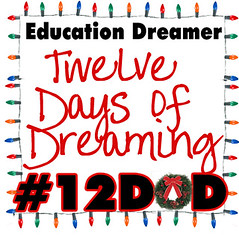|Kelly Tenkely|
One of the byproducts of starting your own model of education: the old systems constantly fall short. They start to feel forced, frustrating and tired. The hard part is that SOMETHING is needed, but what others have in place isn’t it.
So you start dreaming. You try to leave assumptions of what it “should” be like behind. You work to imagine something new and different. Something that fills the need in the right way.
It seems like every corner we turn we have to reinvent. Anastasis needs a way to organize and keep track of student information…easy! We will hunt down a student information system, there are a million to choose from! [This is the part where we hit a brick wall.] There may be a million student information systems to choose from, but none of them fits our needs. None is flexible enough to use the way we need to use it. They make assumptions based on a system that we aren’t a part of. So, we come up with our own solution. We mash-up tools that were never designed to do what we do with them. We make them bend to our will. Eventually, I’ll just create my own solution (The Learning Genome Project), and it will do just what we need it to because it was designed apart from the assumptions.
The most recent challenge: redesign the report card. This may seem like a simple task. It has been anything but simple! This has been going an ongoing challenge for us. We redesigned the learning experience from the ground up. We don’t give grades, at least not in the traditional sense. So then, how do you help parents come to understand everything that happens in the 8 hours that their children are with us every day? How do you show them the richness of learning, the uniqueness of their child, without reducing it to a score in a handful of “essential” areas? How do you change a culture who seeks validation that their child is “smart” based on a piece of paper that comes home four times a year? How do you help them really understand the difference in philosophy if the reporting looks the same?
This is a challenge because what makes us learners is so wonderfully complex. It isn’t only about math, reading, writing, science, social studies and art. At Anastasis, we are in the business of helping students “Stand Again” (the Greek translation of Anastasis), to become fully alive in who they are as unique individuals contributing to the fabric of the world. Our reporting has to reflect this. Obviously, your typical report card isn’t going to cut it. We’ve looked high and low for a ready-made solution. It doesn’t seem to exist.
On Wednesday mornings, we have a late-start for our students. This gives the staff great time to come together and tackle these daunting tasks. We talk often about all of the incredible things that we see in our learners every day. We wonder over the phenomena of parents just wanting to know what their grade would be…you know, if they had one. What they are really asking is: “is my child going to be okay? Are they going to do well in life?” The grade they are seeking doesn’t really answer those questions. As teachers we know that if a child is in an emotionally hard place, or doesn’t have the attitudes and habits of learning built up, they won’t perform to the fullest in math/reading/writing/science/social studies. It isn’t about them just knowing their math facts, they also have to have the spirit of risk-taking, the discernment to know which operation to apply to a problem, the perseverance to stick with a problem they don’t immediately know the answer to, etc. We want SO much more for children than for them to recite math facts by memory. We want them to be fully ALIVE as learners. We dreamed, we made list after list of what we want graduating students to look like. We drew pictures. We laughed (a lot). We got frustrated that it wasn’t simpler.
Over the last week, I’ve taken those notes, scribbles, drawings and lists and drew up a report card. It looks very little like any report card you’ve probably seen. It isn’t perfect. I suspect it will go through some evolution. Our main objective is to help communicate that we are teaching amazing, unique beings. In the center you will see my crude version of the Vitruvian Man. I love the blend of disciplines that daVinci revealed. There is a sort of perfection in the overlap…it looks a lot like life. We stuck with the Greek theme, and used ethos, pathos, mythos and logos to help us describe different parts of a child. In true Anastasis fashion, we made up our own Greek-inspired word, Pneumos, to show the creative force…the “life-breathed” spiritual aspect of a child. Below is our re-imagined report card. I’m still working on the second page that includes definitions of each word listed in our circle. In addition, we use standards-based-grading and a variety of rubrics. Our standards-based-grades are a little different (surprise!), our goal is forward progress through learning, standards gives us a framework for this to happen. We don’t stick within grade levels. Sometimes second grade students are ready for fifth grade standards. We say, “have at it!”
We are really working toward changing a culture. I like to think of it as dance lessons for zombies. As a culture we seemed to be immersed in systems. We take them for granted and let them dictate our every move. Systems can be good, they can bring order and rationality. But they can also stifle and keep us from really living. They can make us look a whole lot like zombies. We are working to make learning look more like life. We are working toward helping learners “stand again” in who they were created to be. To dance.





